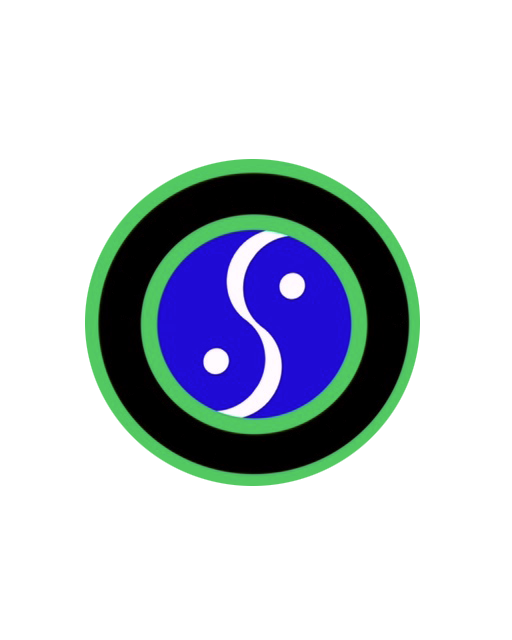Everyone has a different body clock. For example, some people are morning people, and that time works best for them, but I peak mid-morning. It is also important to pick a time that works with your schedule and commit to that as you would to brushing your teeth. Listen to your own body clock with regards to best time of day.
It always good to warm up and cool down before and after you train. For serious or professional dancers or athletes, six days a week of stretching is good with one or two rest days per week. The body needs time to process, heal and repair. As far as daily training in your sport, it helps to cross-train and work different muscle groups so the other muscles can repair. This helps progress shot forward. Be mindful that you are stretching correctly with good form.
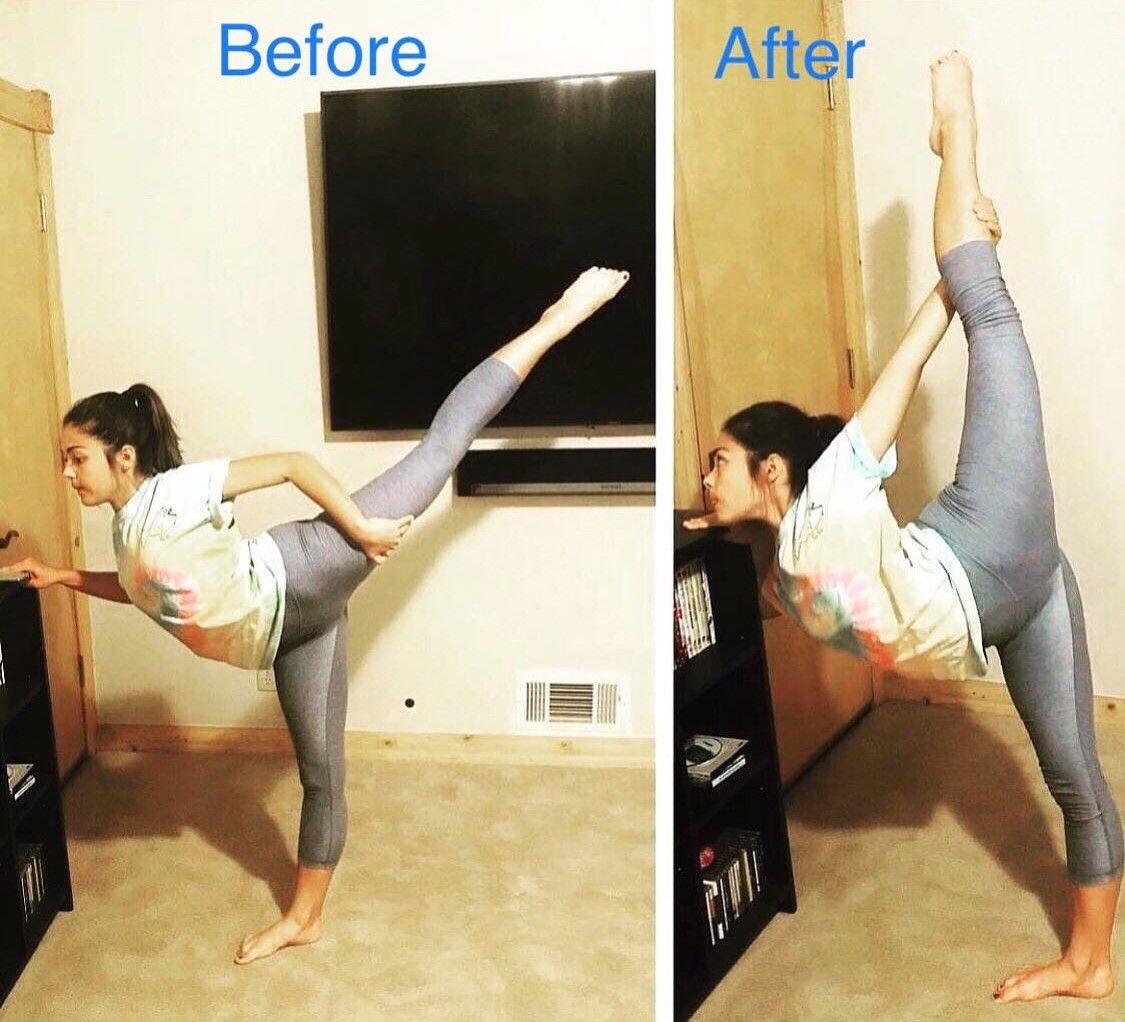
If you have developed the habit of going into the splits without being in correct alignment, the body becomes accustomed to that. When you try to change that and do it technically correct, it can feel uncomfortable. You may have had a tight back and hips to begin with, which led to you cheating a bit, to feel like you are all the way down in the splits.
To help slide down into the splits with correct alignment, make sure you can feel the knee and the top of the foot of the back leg, connecting with the floor beneath you. The front leg and the foot should not be rolled in or out, the leg and knee should be pointing up to ceiling in one clean line.
If the alignment is not cleaned up it may lead to serious injuries and issues. Including, the form of standing leg kicks and other positions will also be affected by this misalignment.
In this video I demonstrate how to use Stacey Stretch Strap to help clean up this common issue. Disclaimer: Speak to a professional for all your health needs and seek their counsel. Children need to be under adult supervision at all times. We disclaim all liability for any physical harm resulting from the information on this website.
Stacey training ballet dancer Malena using Stacey Stretch Strap in 2 filmed courses. "Extensions For Days" "Pre-Pro-Pro Flexibility Training For Dancers"
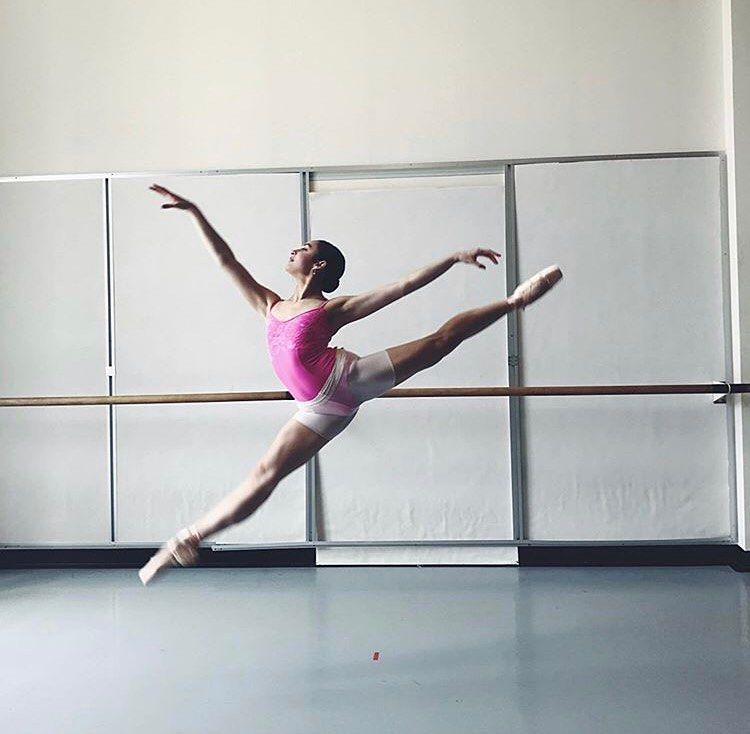
Since everything is connected the more time you take to stretch the entire body in the correct sequence the bigger the payoff! I like to start with upper body to get the energy going. Then work my way down, with each stretch gradually becoming more intense. Don't forget to stretch the foot and calve, it will make it easier to stretch the hamstrings and low back. This way that whole line gets stretched.
Make sure you open your outer hips (IT band) and stretch the waist to help the lower back to release. Don't forget the inner thighs, too, which is also a necessary area to prepare to perform the moves listed above in the question. Ankle weights and
Stacey Stretch Strap® are good to use once you are warmed up. This helps tire and strengthen the muscles to enable an increase their range of motion.
Also Read :
How To Get a Flexible Back For Dance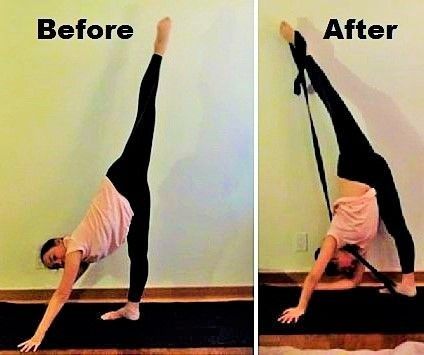
If you are feeling constant fatigue, soreness and your body is not performing at its best. I recommend getting plenty of sleep and taking some rest days so the body can repair and store up energy. Drink lots of water to prevent dehydration. These things will help tremendously. A massage and going for a walk can help get rid of the lactic acid.
It can be helpful to see a chiropractor that does the activator method. Do not stop training completely. It is counterproductive to not do anything. Train around the injury with exercises that don't hurt the leg, such as elliptical, bike, swimming and stretching. This will safely keep you in shape and get blood circulating to the injured area and produce uplifting endorphins. Cross training is a good formula to come back even stronger, this gives the opportunity to work new muscles and give overused areas a change to repair. Don't do anything that causes the bad kind of pain. It also helps to visualize and see your body pain free and in top form.
A. Stretching properly with the correct form and clean alignment
B. The body needs to be opened step by step by doing the stretches in the correct sequence.
C. Breathing correctly is one of the biggest parts of getting results.
D. Relaxing -- never force or bounce.
E. Consistency and visualization
F. Dedicate certain days to just flexibility training

A. Learn the correct sequence to wake up the major muscle groups to gently transition from whatever is going on in your day into a practice that is completely focused.
B. Listen to your body. If your body is talking to you through back pain, shoulder pain or if you are unable to master a new dance move because you are too tight, I suggest you learn the best stretches for your exact specific needs, to avoid ending being continually stuck, frustrated and injury prone.
C. Once warmed up, gently start practicing similar movements on the floor and at the bar, that you will be practicing or performing.
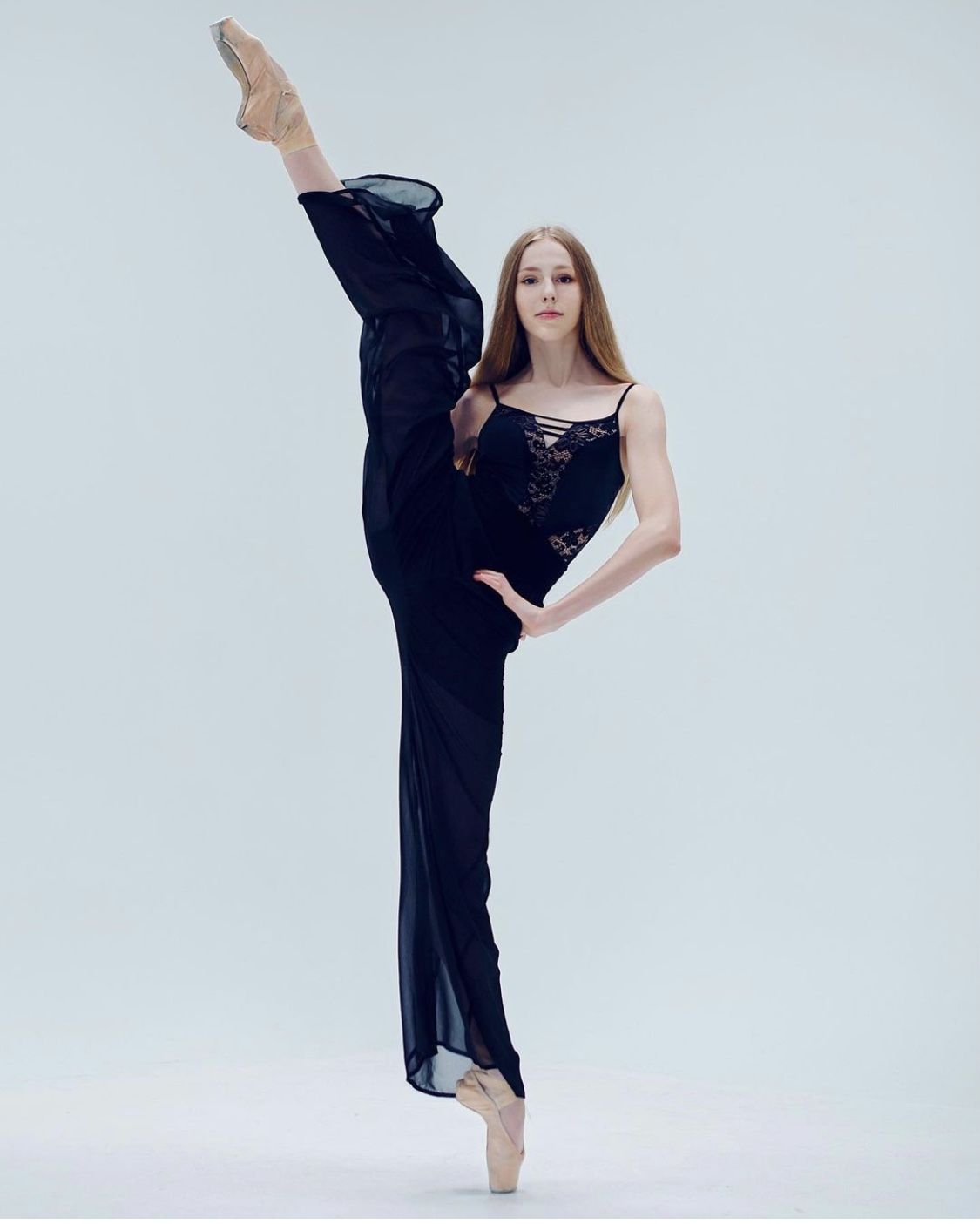
"After doing your programs look what I got! Thank you." Farrah Ballet Dancer with Stuttgart Ballet
In my online flexibility courses I demonstrate how to get a deeper stretch in my shoulders, by holding the wall and twisting away from it. I also have my clients do exercises with light dumbbells to stretch and strengthen the back and shoulders.
1.Believing a misinformed teacher or coach who told them they will never be flexible.
2. People believe they are old to increase their flexibility. The truth is anyone of
any age can become more flexible if they learn to do it properly and commit to it.
*That the mind controls the body. Align with your highest visions of yourself. See yourself exactly the way you wish to be, and the body will follow by doing exactly what you believe you are capable of. This will also internally guide you to recognize the right coaches, programs, people, places, and things that support your vision.
*Stay away from cigarettes and starving to be thin. This will negatively impact your health, performance and
slow down healing time. Treat food as medicine and learn to eat foods that heal and balance the body. Then you will not have to worry about weight. You'll also perform at top level while feeling and looking your best.
To perform with complete freedom with full range of motion and the ability to perform with clean alignment in one’s sport without pain or strain.
You are only as good as your flexibility level and clean alignment. One's level of flexibility affects that individual's form, alignment, the ability to have clean lines, proper technique. Perform at highest potential and prevents injury.
More about Stacey's work: Flexibility coach to top athletes: Olympians, professional dancers, Cirque Du Soleil performers, established actors, pro soccer, NBA players, gymnasts, track & field, figure skaters, hockey players, UFC champion Victor Belfort and Carlson Gracie Team and more! She appears on the TV Show "Eye on the Desert" KESQ ABC as a regular guest demonstrating flexibility mobility segments.
As a professional martial artist she used her understanding of how to maximize range of motion with perfect alignment performing as an action actress: including a guest lead on “Power Rangers” and in video games. Stacey has contributed over 30+ articles to the Huffington Post and has been featured in many publications.





